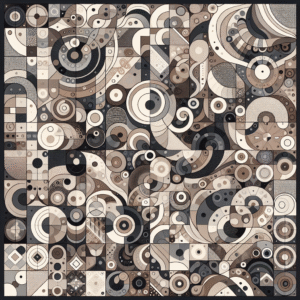A design is much more than just an aesthetic creation. For a company, it is a strategic asset, part of its identity and a source of economic value. Like any asset, however, it may be subject to compulsory execution by a creditor seeking to recover a debt. The seizure of a design is a technical procedure, at the crossroads of intellectual property law and enforcement. Navigating this field requires a detailed understanding of the mechanisms involved, because these intangible assets cannot be understood in the same way as tangible goods. It is essential to know the rules that govern the broad field of intangible rights and their special applications to protect your rights, whether you are a creditor or a debtor.
What is a design?
Before going into the mechanics of seizure, it is essential to define precisely what the law protects under the term "design". It is not the abstract idea behind a creation, but its formal embodiment, the visible appearance of a product or part of a product. This protection is a powerful tool for designers and companies that invest in design.
Definition and protection criteria (CPI, Art. L. 511-1 & L. 511-2)
The French Intellectual Property Code (CPI) defines a design as "the appearance of a product, or part of a product, characterised in particular by its lines, contours, colours, shape, texture or materials".. This definition, taken from article L. 511-1, is deliberately broad. It can cover objects as varied as the design of a piece of furniture, the shape of a perfume bottle, the pattern of a fabric or even the graphic interface of an application.
To benefit from legal protection, this appearance must meet two cumulative conditions set out in Article L. 511-2 of the same code:
- La new Novelty: a design is considered to be new if, at the date of filing of the application for registration, no identical design has been made available to the public. The assessment of novelty is strict.
- Le individual character The second, more subtle condition is met if the overall visual impression that the design creates in the informed observer differs from that produced by any previously disclosed design. A difference in detail is not enough; the object must be distinct overall from existing creations.
These two pillars ensure that only truly original and distinctive designs are afforded the protection conferred by the law.
INPI registration: an essential condition (CPI, Art. L. 511-9)
Under French law, the creation of a private right in a design or model is conditional on its registration. Article L. 511-9 of the French Intellectual Property Code lays down this principle: the right is acquired through registration with the National Institute of Industrial Property (INPI). Without this formal step, protection under Book V of the CPI does not exist.
This public registration has a dual function. On the one hand, it gives the owner a monopoly on the appearance of the product for a period of five years, renewable for five-year periods up to a maximum of twenty-five years. Secondly, and this is what interests us here, it gives substance to the right. It brings it into legal existence as an identifiable asset, with a registration number, a designated holder and a creation date. It is this registration that makes the right "seizable" by giving it an objective existence that can be used against third parties, including creditors.
The seizability of designs: a recognised right but no dedicated procedure
A registered design is an intangible property right. As such, it has an asset value and forms part of the general pledge of the creditors of the right holder. Seizure is therefore possible, but is subject to rules that are not always obvious at first glance, in the absence of specific provisions.
Legal framework and the absence of a special text (comparison with trademarks/patents)
The principle is simple: any creditor in possession of a writ of execution recording a claim that is due and payable may enforce it against the debtor's assets. Designs, as valuable assets, are no exception to this rule. Moreover, intellectual property law itself organises specific seizure procedures for other assets, such as patents and trademarks.
However, a notable feature of the designs regime is the absence of any special text in the Intellectual Property Code organising their seizure and enforcement. While the CPI contains detailed provisions for the seizure of patents and trade marks, it is silent on designs. This legislative gap does not mean that seizure is impossible. It simply means that you have to turn to the ordinary law of enforcement. The applicable procedure is therefore the seizure of intangible rights, governed by articles L. 231-1 et seq. and R. 232-1 et seq. of the Code of Civil Enforcement Procedures (CPCE).
It is essential not to confuse this seizure and execution with another measure with a similar name: counterfeit seizure. The latter is not a means of recovering a debt, but an evidentiary procedure enabling the holder of an intellectual property right to have an infringement of its monopoly established and to gather evidence of an infringement.
Consequences of seizure: unavailability and pecuniary rights
Once the writ of attachment has been served, it has immediate and binding effects for the debtor who holds the right. The main consequence is the unavailability of the seized design. In practical terms, the debtor loses the right to dispose of his assets. They can no longer sell it, transfer it free of charge, contribute it to a company, pledge it or abandon it. Any act of disposal carried out in violation of the seizure would be unenforceable against the seizing creditor.
In addition, the seizure does not relate solely to the title of ownership itself, but also to the "fruits" that this asset generates. These are all the pecuniary revenues derived from its use, such as royalties paid by a licensee. From the time of seizure, these sums must be paid into the hands of the court-appointed receiver and no longer to the debtor. Any licensee who continues to pay the right holder will be liable to pay a second time.
Procedure for entering designs
The seizure procedure follows the stages defined by the Code of Civil Enforcement Procedures for intangible rights. The procedure is precise and involves the intervention of a court commissioner and a clearly identified third party: the INPI.
The garnishee: the National Institute of Industrial Property
Intangible rights are seized by serving a writ on a "garnishee", i.e. the person who "holds" the right on behalf of the debtor. In the case of a design, this third party is the INPI. The institute is not the owner of the right, but it is the custodian of the national register that formalizes its existence and ownership. It is therefore at the INPI that the court commissioner will serve the writ of attachment, thereby making the measure enforceable against everyone.
The INPI is then obliged to provide the creditor with all the information it holds on the seized right: existence, identity of the owner, any deeds of assignment or pledge already registered, etc. This information is vital if the creditor is to assess the value and legal status of the asset that has just been seized.
Formalities for seizure and notification to the debtor
The procedure begins with a bailiff's writ (now a court officer) served on the INPI. To be valid, this document must contain a number of compulsory details, including identification of the creditor, the writ of execution, a breakdown of the sums due and, of course, precise identification of the design or model seized (by its registration number).
Once the seizure has been carried out, the creditor has a very short period of eight days in which to "notify" the debtor. This notification, which is also made by a court commissioner, informs the debtor of the measure taken against him. The notice must remind the debtor that he has one month in which to contest the seizure before the enforcement judge in his place of residence. Once this period has elapsed, the debtor is deemed to have acquiesced in the seizure, and the creditor may then apply for the right to be sold.
The forced sale of seized designs
The purpose of a seizure is to transform the seized assets into cash to pay off the creditor. If the debtor does not settle his debt, the creditor can force the sale of the design. This sale can take two forms.
Out-of-court sales: conditions and limits
Where possible, the Code of Civil Enforcement Procedures favours a less brutal solution than public auction. The debtor can therefore ask the enforcement judge for authorisation to sell the seized right himself, by mutual agreement. The debtor has one month from the date of notification of the seizure to find a buyer and propose the terms of the sale. This solution is often preferable as it generally enables a better price to be obtained than an auction, thus protecting the interests of both the debtor and the creditor.
The judge will then set a minimum price below which the sale cannot be made and will determine the time limit within which the sale must be concluded. The proceeds of the sale will be deposited and used to pay the distraining creditor.
The tender: specifications and advertising
If there is no amicable sale, either because the debtor has not requested one or because he has not found a buyer under the conditions laid down, the creditor may initiate the forced sale procedure by public auction (adjudication). This sale is organised under the supervision of the judge.
The creditor must have specifications drawn up. This essential document describes the seized property, traces the history of the proceedings and sets out the terms of the sale. It can be consulted by any potential buyer. The sale must then be advertised sufficiently to attract bidders and guarantee the transparency of the procedure. The sale is advertised in legal gazettes and, depending on the nature of the right, in specialist trade publications.
Transfer of ownership and post-sale registration
Whether the sale is amicable or forced, ownership is transferred to the purchaser. In the case of an auction, the judgement or the minutes of the auction constitute the new buyer's title of ownership. The last, but by no means least, step is to make the transfer enforceable against third parties. To do this, the buyer must register his title in the National Designs Register held by the INPI. Without this registration, the former owner could, in the eyes of a third party acting in good faith, still appear to be the legitimate holder of the right.
The seizure and sale of a design are complex procedures that require a methodical approach and a thorough knowledge of the applicable rules. Each stage, from service of the document to registration of the transfer, contains potential pitfalls. The assistance of a lawyer is highly recommended to secure the recovery of the debt or, conversely, to defend the rights of the distrained debtor. For an analysis and assistance with your procedures relating to the seizure of intangible and intellectual property rightscontact our office.
Sources
- Intellectual Property Code
- Code of civil enforcement procedures




